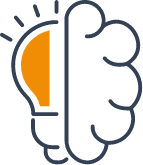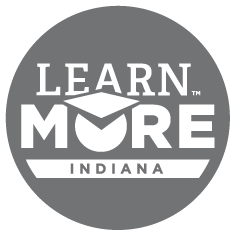Descubrir una carrera
Descubre tus opciones profesionales
Career Discovery Meetings (CDM)
House Enrolled Act (HEA) 1002-2023 mandates that students in grades 11 and 12 engage in a 30-minute, in-person Career Discovery Meeting (CDM) with an approved postsecondary educational institution, intermediary, employer, or labor organization. These meetings are designed to help students explore future career opportunities and understand the educational requirements needed to achieve their goals.
What to Expect in a Career Discovery Meeting
Each CDM provides a unique opportunity for students to learn directly from professionals.
The meetings must:
- Take place on school property
- Be conducted in person
- Include no more than five students at a time (Unless conducted by a post-secondary institution)
- Occur during school hours
- Last for 30 minutes
During the first 25 minutes, students will discuss future career opportunities and the necessary education levels. The final 5 minutes are dedicated to verifying the meeting’s completion via the Indiana Commission for Higher Education’s ScholarTrack website.
Reporting Your Meeting
Students will record their CDM by logging the required information into ScholarTrack using their Scholar ID and a temporary PIN or their “Full Student” account. Information for creating a ScholarTrack account can be found here.
Opting Out of a Career Discovery Meeting
Students can opt out of a CDM if:
- The school submits a written request to the Indiana Commission for Higher Education (CHE) to waive the meeting requirement if no approved entities are available to meet with students.
- A parent or an emancipated student submits a written opt-out request to the school or CHE.
Students do not need to complete a CDM if they:
- Participate in a school-approved program where they work for an employer or labor organization part-time and attend school part-time.
- Receive career coaching services through the career coaching grant under IC 21-18-20.
- Attend an in-person meeting hosted by an approved intermediary within the same school year.
Want to learn more?
Visit our FAQ page for more information on CDM implementation.
¿Qué tipo de trabajos hay y cómo puedo encontrarlos?
Es una buena idea buscar carreras que estén contratando gente, para que puedas poner a trabajar a tu favor el título que tanto te ha costado conseguir. Dependiendo de dónde quieras trabajar, algunos empleos tienen más demanda que otros.
Aquí en Indiana, algunas de las carreras de más rápido crecimiento incluyen enfermeros titulados, profesores, soldadores y maquinistas. Visite INDemand Jobs para ver un resumen de estas carreras, junto con los salarios medios y los requisitos de titulación.
Visita Indiana Career Explorer para acceder a más recursos como evaluaciones de habilidades, encuestas de interés y mucho más. Cree su perfil para empezar.
Realiza la encuesta de intereses profesionales.
En esta encuesta, puedes reducir algunas opciones profesionales clasificando las actividades que te gusta hacer. Cuando hayas terminado, los intereses mejor clasificados te relacionarán con las profesiones que más te pueden gustar.
Realice la evaluación de competencias.
Todo el mundo es bueno en algo. A algunos se les dan mejor los números. Hay quien sabe combinar colores y texturas de forma única. A algunos les gusta trabajar con las manos y ser activos. Durante esta evaluación, marcarás tu nivel de confianza al realizar determinadas actividades y los resultados mostrarán las profesiones que requieren las habilidades que mejor se te dan.
Realiza la evaluación de valores laborales.
¿Cómo quiere que sea su equilibrio entre trabajo y vida privada? ¿Quiere un trabajo más tradicional de "9 a 5"? Tal vez te veas desempeñando un papel muy práctico. ¿Cuánto dinero quieres ganar? Todo esto es importante. Esta evaluación te ayudará a averiguar qué es lo que más te importa en tu carrera profesional y en tu estilo de vida.
Realice el perfil de trabajo ágil.
Tienes cosas que te gusta hacer y que se te dan bien. Realiza el Agile Work Profiler para descubrir cómo tus intereses se traducen en habilidades que los empleadores valoran y en palabras para describir el valor que aportas.

¿Y ahora qué?
Una vez que haya identificado la carrera que desea seguir, es hora de empezar a planificar su futura educación. Esto implica elegir una universidad o un programa de certificación. Para saber cómo hacerlo, visita Planificar la universidad.
